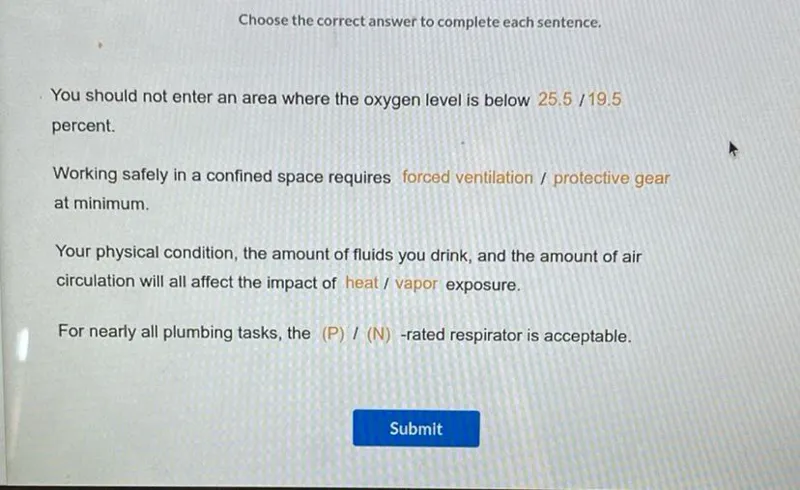Questions: Choose the correct answer to complete each sentence. You should not enter an area where the oxygen level is below 25.5 / 19.5 percent. Working safely in a confined space requires forced ventilation / protective gear at minimum. Your physical condition, the amount of fluids you drink, and the amount of air circulation will all affect the impact of heat / vapor exposure. For nearly all plumbing tasks, the (P) /(N)-rated respirator is acceptable.

Transcript text: Choose the correct answer to complete each sentence.
You should not enter an area where the oxygen level is below $25.5 / 19.5$ percent.
Working safely in a confined space requires forced ventilation / protective gear at minimum.
Your physical condition, the amount of fluids you drink, and the amount of air circulation will all affect the impact of heat / vapor exposure.
For nearly all plumbing tasks, the $(\mathrm{P}) /(\mathrm{N})$-rated respirator is acceptable.





